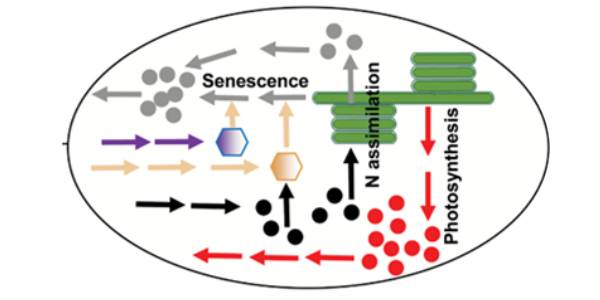
Review: Source-sink interactions in plants ($)
Plant Science Research Weekly, Research, Research Blog0 Comments
/
With populations increasing globally, improving crop yield potential is one of the major challenges to the plant biologist, complicated by the changing climate. A better understanding of the source (material producer or exporter, e.g., leaves) – sink (material importer or consumer, e.g., roots, growing…
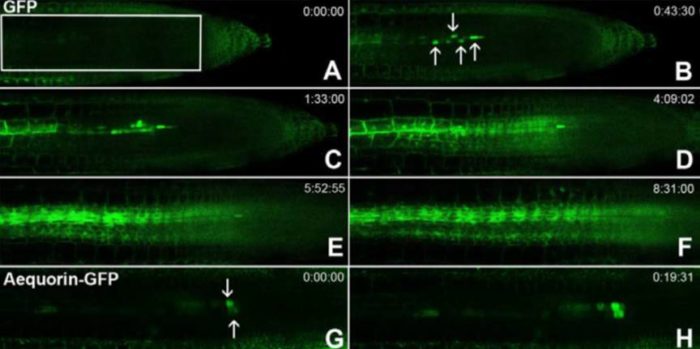
Phloem unloading in Arabidopsis roots
Plant Science Research Weekly, Research, Research BlogIt is well known that long distance transport and movement of molecules is enabled by phloem, but the precise mechanism of loading/unloading of phloem mobile compounds is not known. In this article, Ross-Elliott et al. used a combination of approaches (non-invasive imaging, 3D-electron microscopy, and…
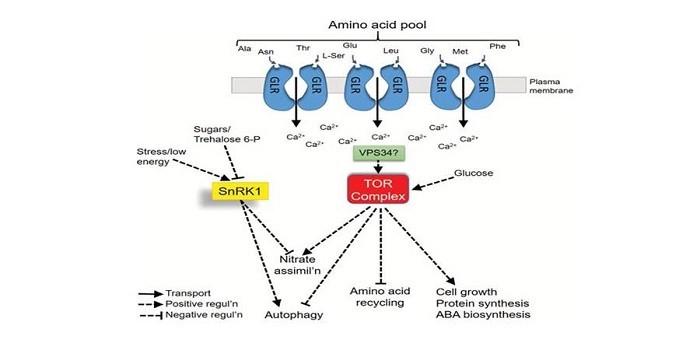
Review: Nitrogen sensing in plants ($)
Plant Science Research Weekly, ResearchLike other organisms, plants have developed mechanisms to sense and respond to changes in the availability of nutrients. Nitrogen (N), being very essential for the growth and development of plants, must also be strongly monitored by plants. N sensing and signaling in plants are highly researched topics,…

Immunity at hydathodes controls bacterial infection ($)
Plant Science Research Weekly, ResearchHydathodes are the sites of guttation, which is a process by which water and solutes are pushed out of leaves by the force of root pressure when the rate of transpiration is low (for example at night). Hydathodes have numerous stomata-like pores and are located near vascular ends. Like stomata, hydathodes…
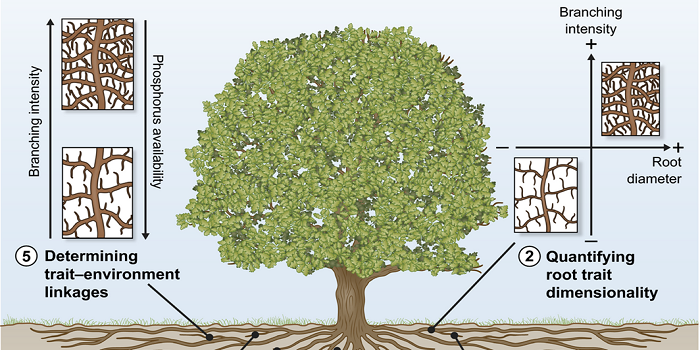
New Phytologist Tansley Medal finalists essays
Plant Science Research Weekly, ResearchThe New Phytologist Tansley Medal is awarded to an early career scientist for excellence in plant science. The essays submitted by each of the five finalists are published in the March 2017 of New Phytologist, and make good reading. We agree with the sentiments of the editors, “warmest congratulations…
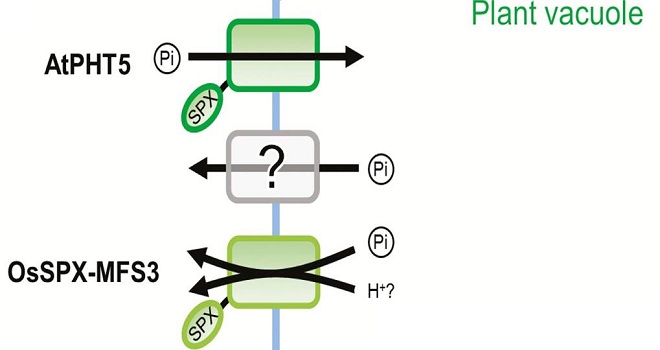
Review: Role of vacuoles in phosphorus storage and remobilization ($)
Plant Science Research Weekly, ResearchPhosphorus (P) is a non-renewable soil nutrient essential for plant growth. The vacuole serves as a crucial dynamic store of P that helps maintain cytosolic homeostasis. Yang et al. review vacuolar P stores, comparing P storage species and membrane proteins in yeast, algae and plants. In yeast, polyphosphate…
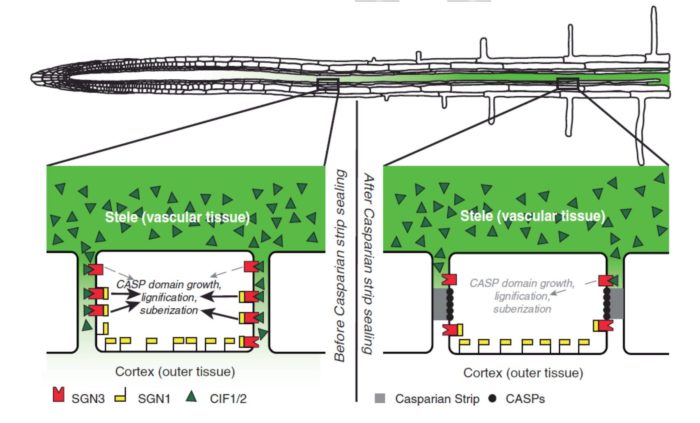
Peptide diffusion as a signal for Casparian strip diffusion barrier formation ($)
Plant Science Research Weekly, ResearchThe Casparian strip is a permeability barrier that seals the spaces between root endodermis cells and so prevents bulk-flow uptake of solutes. Previously, a leucine-rich repeat receptor kinase called SCHENGEN3 or GASSHO1 (GSO1/SGN3) was identified as necessary for normal Casparian strip formation. Now,…
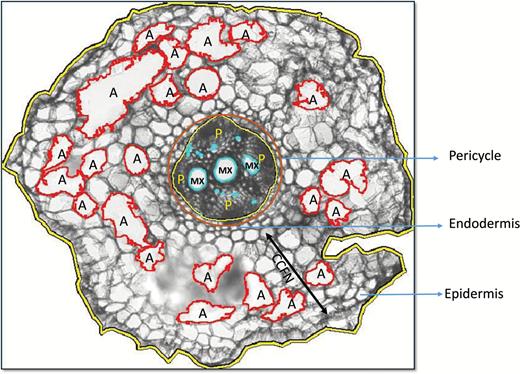
Root xylem plasticity to improve water use and yield in water-stressed soybean
Plant Science Research Weekly, ResearchRoot architecture and anatomy contribute to water uptake efficiency and plant performance under water-limitation. Prince et al. explored root anatomy in a panel of soybean, and identified metaxylem number as a key trait influencing performance under water-limiting conditions. Increases in metaxylem number…
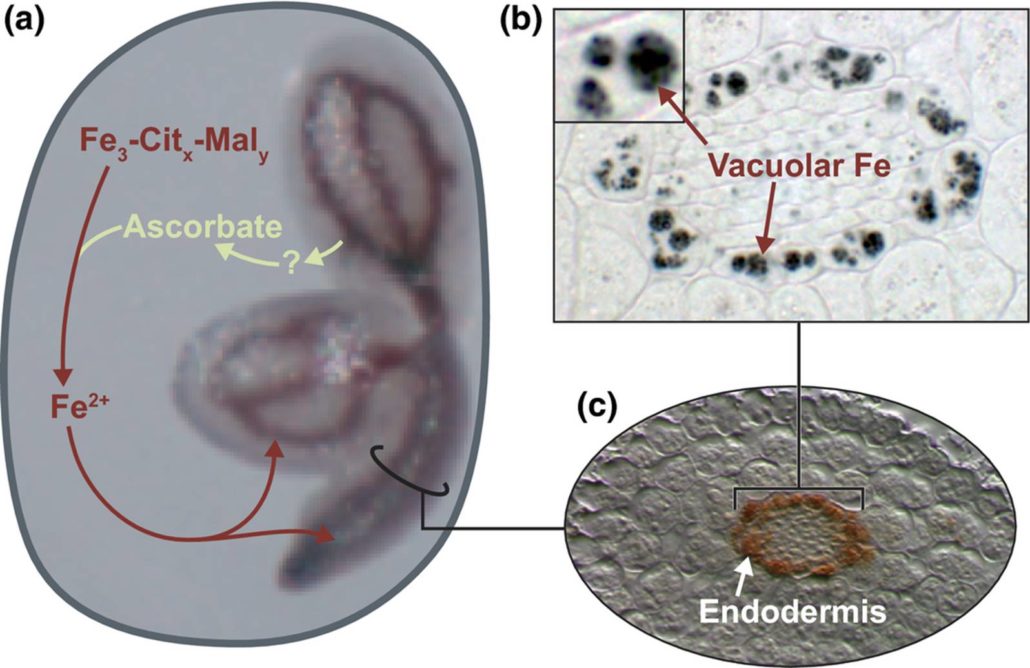
Review: New routes for plant iron mining
Plant Science Research Weekly, ResearchIron (Fe) is a frequently limiting nutrient for plant growth. Iron uptake requires that plants manipulate the extracellular environment through secretion of protons, chelators and other molecules. Curie and Mari review new studies on the importance of coumarin (phenolic compound) secretion in iron uptake,…

